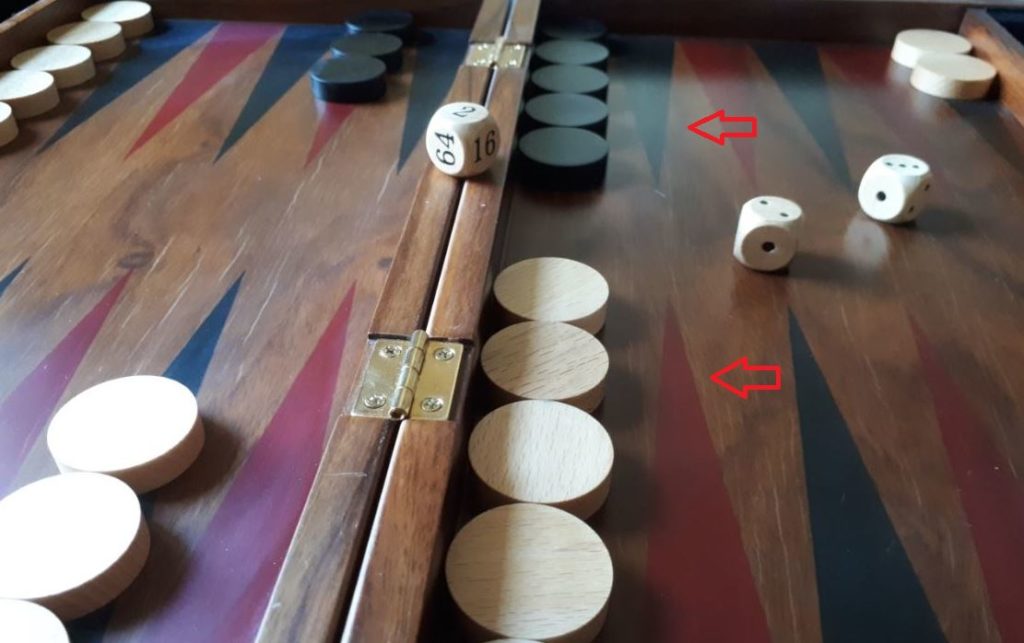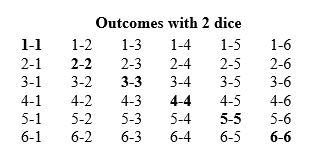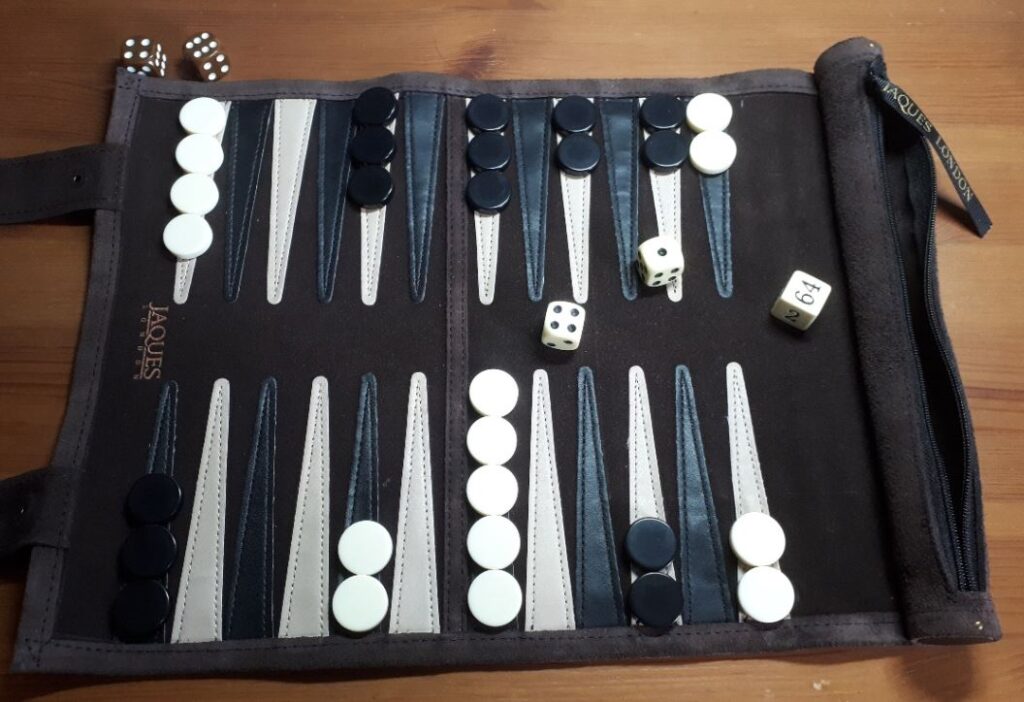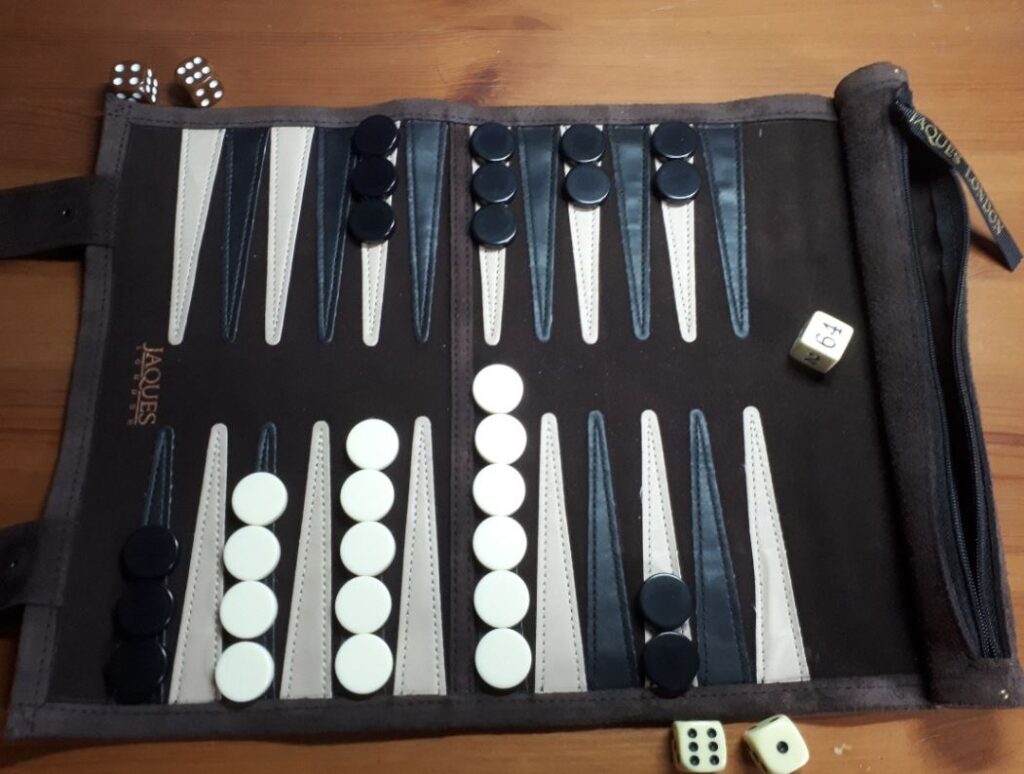Last updated on May 9, 2024
This Deluxe Backgammon post is another in our series for complete beginners and newcomers. Today’s post highlights a couple of common backgammon mistakes that beginners are likely to make.
Don’t play too safe.
Beginners will often play too safe instead of playing to develop their position, particularly early in the game. Developing your position means improving the overall structure of the points in order to create flexibility. To achieve this, you must take some small risks early in the game. These risks involve leaving blots as builders to secure a valuable point on subsequent rolls.
An example would be splitting your back checkers in order to capture your opponent’s 5-point on a subsequent roll. Splitting the back checkers increases your chances of securing an advanced anchor and improves your coverage of the opponent’s outer board. It makes it more dangerous for your opponent to bring builders down their mid-point as they could now be in the range of a direct hit (6 or less). It also, makes it dangerous for your opponent to slot their 5-point.
Splitting
The beginning of the game is the safest time to split your checkers. Your opponent is unlikely to hit you in their home board before they have secured some points. Waiting too long to split can mean getting trapped on your opponent’s 1-point with no easy way to escape. The perfect example of early splitting is the opening 2-1 roll, where the recommended play is 24/23, 13/11. Many beginners would be reluctant to leave two blots on the board. However, this splitting play makes develops positions on both sides of the board.
Another example would be the slotting play of the 2/1 opening move. Slotting is a useful tactic to help build primes. In this aggressive play, the move is 13/11, 6/5. Most beginners would be highly reluctant to make this move, leaving a checker in range of a direct hit. However, if you don’t get hit there are 28 rolls out of 36, which will allow you to secure the 5-point on the next roll. If you are hit there is plenty of time to reassess your strategy and get back into the game.
Generally, early in the game, it is worth taking a few risks in order to secure key points on subsequent moves. There is plenty of time left in the game to recover from hits. Leaving a lone checker within range of a direct hit can be risky. However, the shorter the range, the less likely a checker is to be hit. A lone checker left six places from your opponent’s checker can be hit on 17 out of 36 rolls. However, a lone checker left one place from your opponent’s checker can only be hit on 11 out of 36 rolls.
Don’t waste your checkers
Another mistake that beginners commonly make is to waste their checkers. There are two main ways they do this, first by burying their checkers and secondly, by building candlesticks. A lot of the time this occurs because of the mistake above where beginners tend to play too safely.
Burying
To bury a checker is to move a piece down into the deeper points on your home board. This means that it can’t be used for making new points or hitting your opponent’s checkers for the rest of the game. You only have 15 checkers in total, so you need to use every single one of them as efficiently as possible, which means keeping them in play.
The position below is an example of where a beginner might be tempted to bury a checker. As we can see it is still early in the game and white rolled 4-1. Moving a checker from the 6-point to the 1-point might seem like a good idea. It frees a checker from the heavily stacked 6-point and moves it to safety on the 1-point where it is so much closer to home. However, this would be a serious mistake. This checker is buried for the rest of the game, unable to assist in securing points or hitting the opponent’s checkers.
A general strategy should be to aim to secure the open points in front of your opponent’s rearmost checkers. That is why, in this scenario, the correct move is from 13 to 8. It keeps all your checkers active and provides a useful builder on the 8-point to help you close the 7, 5 or 4-points on a subsequent roll.
There are times when you can be forced to waste your checkers. This particularly happens late in priming games when you are unable or unwilling to move checkers from your opponent’s home board. In this instance, you have no choice but to bury checkers from your own prime deep into your own home board. In backgammon, this is known as crunching.
Candlesticks
Another typical wasting strategy used by beginners is stacking too many checkers on a single point. In backgammon, a heavily stacked point is known as a candlestick or a tower. It is not unusual to see a beginner with several candlesticks or towers on their board. Heavily stacked points are very inflexible, which makes it difficult for you to develop your position. You basically have to get lucky and roll a double in order to unstack the heavily stacked points and build new anchors. Try to limit the numbers of checkers on any single point to four to avoid a candlestick. Instead, create flexible positions where you builders outside of the range of direct hits. This will allow you greater flexibility on subsequent rolls.
Beginners will definitely benefit if they recognise these common backgammon mistakes and banish them from their games.
Related content
Rules of thumb. Overall, these rules will help to simplify your decision-making process.
Backgammon tips from Backgammon Galore.





In front of a jury of my backgammon peers, I plead guilty as charged on all backgammon offences!